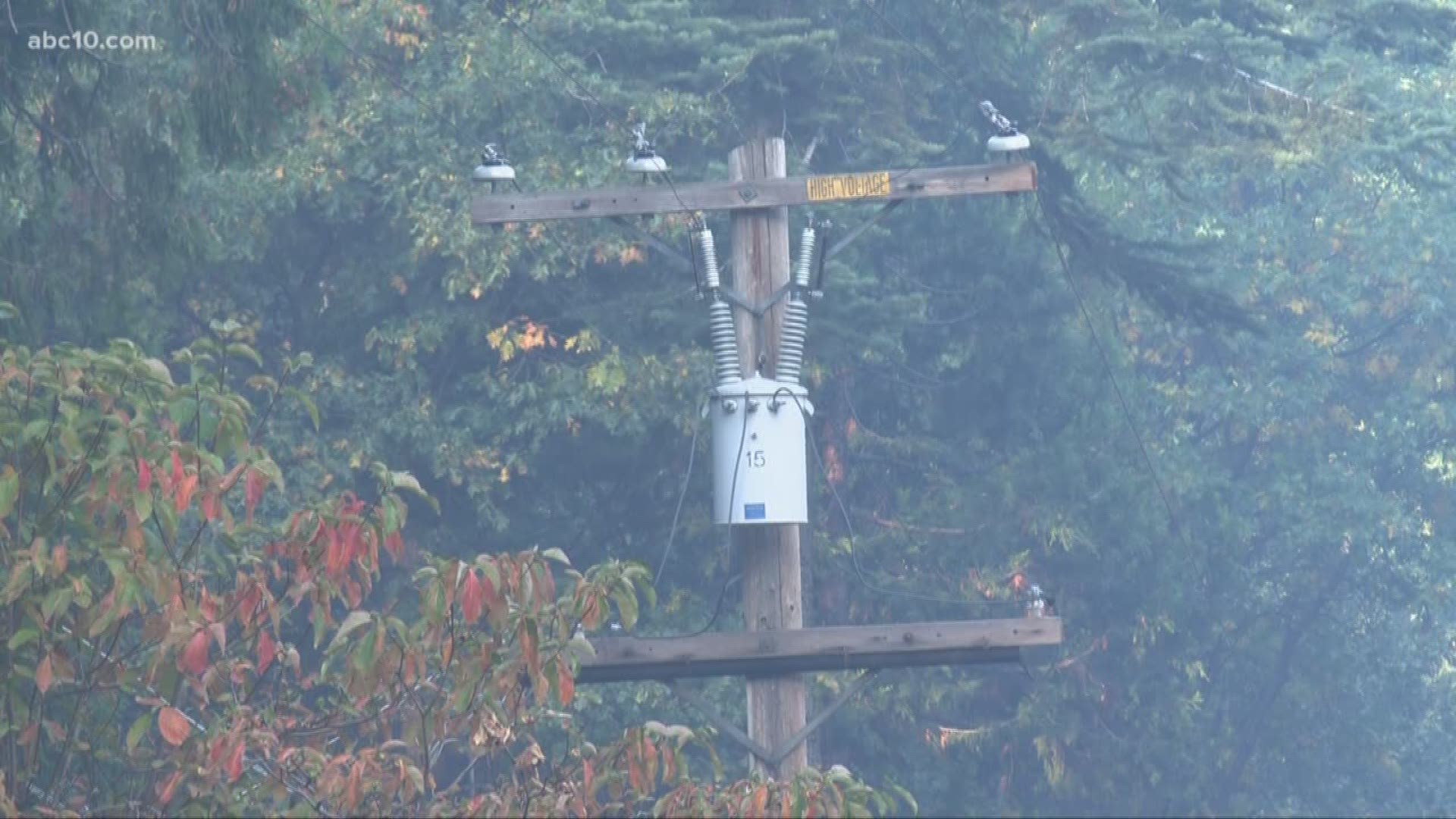SACRAMENTO, Calif. — A team of state government employees worked a combined 200 hours to help fix the broken website of power monopoly PG&E and it's unclear whether the company will compensate taxpayers for the cost.
The state Department of Technology told ABC10 that it assigned seven state employees, including a mix of engineers and data analysts, to work on PGE.com, during its unprecedented power shutoffs in early October.
PG&E's website was supposed to be the primary source of information about where and when the shutoffs to more than 2 million people would happen, yet the company's computer networks couldn't handle the web traffic.
Government workers had to jump in to help rescue PG&E's website, tackling problems with web infrastructure and reconfiguring the monopoly's map application-- a tool meant to help people make sense of when and where wildfire safety shutoffs were in effect.
WHO PAYS? NOT SURE YET.
The work performed at taxpayer expense is worth thousands of dollars. It amounts to five workweeks of labor.
Asked to share an exact dollar amount and whether the state intends to bill PG&E for the work, department spokesperson Alice Scott-Rowe told ABC10 that the information "is not immediately available."
Scott-Rowe defended the decision to assign state workers to work for the for-profit company, saying their efforts were intended "to make sure Californians were able to access critical information" during the shutoffs.
PG&E expressed gratitude for the work performed by state employees but was noncommittal about the idea of footing the bill.
"We haven't received a request for reimbursement," PG&E spokesperson Brandi Melo told ABC10 when asked whether the company would compensate the state government for the work performed at taxpayer expense.
The shutoffs happened as the result of a lack of faith in the safety of PG&E's power grid, yet the company insists that the shutoffs are primarily to blame on the weather.
PG&E is already under fire for refusing to compensate customers for shutoff losses such as spoiled food. The monopoly's executives shrugged off calls from Gov. Gavin Newsom (D-California) to give affected customers a $100 credit on their power bills.
CUSTOMERS LEFT IN THE DARK
PG&E has repeatedly apologized for the failure of its website during the shutoffs and has promised better performance in the future.
Those promises could face a test as soon as Oct. 23, when PG&E says it may cut power again to about 200,000 people.
The demand for information was intense. PG&E's monopoly turf is home to 16 million people — about double the population of New York City.
PG&E is under immense pressure to disconnect power during periods of high fire danger and wind, including from the federal judge supervising PG&E's punishment for crimes. PG&E is serving a sentence of probation for six federal felonies that it committed in connection with the deadly 2010 San Bruno gas explosion.
Since then, PG&E's power equipment has been named as the cause of wildfires that killed 107 people and inspections have found numerous safety problems — both with the power equipment itself and with the effort to trim trees to a safe distance from power lines.
Federal judge William Alsup pushed PG&E to shut off power rather than risk a repeat of the 2018 Camp Fire, which destroyed the community of Paradise and killed 85 people.
TAXPAYERS TO THE RESCUE
During the early October shutoffs, Gov. Newsom announced that the state took the unusual step of offering to assign state employees to help PG&E run its business.
While PG&E does have a state-granted monopoly, the company is owned by private shareholders.
"We're providing any personnel that [PG&E] may need," Newsom said. "That's not the state's responsibility, but we will take responsibility because of this moment."
The governor shared that state IT teams worked with staff from private-sector tech companies including Microsoft and Amazon through the middle of the night to restore PGE.com after the power outages began on Oct. 9 2019.
The state also offered to provide government employees to staff PG&E's call centers and to contribute workers and equipment to inspect PG&E power lines for wind damage to help restore power more quickly.
Those offers were not accepted by PG&E, according to the Governor's Office of Emergency Services.
IS THE WEBSITE FIXED?
PG&E told state regulators last week that it has already made improvements to its website, including moving more of its functions to cloud-based servers instead of the monopoly's own in-house computer network.
At an emergency meeting with state regulators last week, PG&E executives said they have taken steps to direct people to a "static" site with basic shutoff information in the event that the demand for real-time maps overloads the system.
Regulators also want PG&E to provide more precise detail about the locations where power will be shut off and when.
Be sure to check out Brandon Rittiman's "Fire Power Money" series, which breaks down California's history of wildfires, Pacific Gas and Electric Company's court issues, and politician roles in regulating the utility company.
FREE ABC10 APP:
►Stay In the Know! Sign up now for ABC10's Daily Blend Newsletter
In California, fires are burning more intensely than ever before. Megafires destroy entire neighborhoods. Some of the deadliest fires have been caused by our own electric grid, but all fires are burning worse because of climate change and an unhealthy forest landscape.



